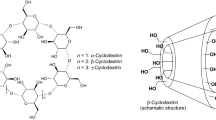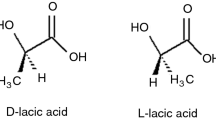Summary
-
1.
A study has been made of the effect of time, temperature, concentration, ratio of original components, and addition of monofunctional compounds on the rise in molecular weight of polyurethans formed by copolymerization of methylenedi-p-phenylene diisocyanate with 1,4-butanediol. The properties of the products formed have been examined.
-
2.
It has been shown that the molecular weight of the polyurethans increases continuously as the duration of reaction increases.
-
3.
It has been found that the molecular weight of the polyurethans attains a maximum value in a definite temperature range; at lower or higher temperatures the molecular weight falls.
-
4.
It has been shown that, with rise in the concentration of the solution, the molecular weight of the polyurethans rises. An explanation has been given for this phenomenon.
-
5.
It has been shown that the dependence of the molecular weight of the polyurethane on the ratio of original components is expressed by a symmetrical curve.
-
6.
It has been found that additions of monofunctional substances bring about a reduction in the molecular weight of the polymer obtained.
-
7.
The possibility of obtaining mixed polyurethan-polyureas has been demonstrated.
-
8.
It has been found that polyurethans undergo alcoholysis in presence of glycols, aminolysis in presence of amines, acidolysis in presence of acids, and isocyanolysis in presence of isocyanates. All of these reactions result in the degradation of the polymer.
-
9.
It has been shown that isocyanates are able to react with, amides, the example taken being the reaction of methylenedi-p-phenylene diisocyanate with 6-caprolactam, and an explanation has been advanced for the formation of three-dimensional products when hexamethylene diisocyanate reacts with a polyurethan.
-
10.
The peculiarities of the copolymerizati on of diisocyanates with glycols have been discussed, and it is proposed that these reactions should be regarded as a new type of polymerization, namely migrational polymerization.
Similar content being viewed by others
Literature cited
V. Solonina, J. Russ. Phys. Chem. Sac., 19, 306 (1887),
V. Solonina, J. Russ. Phys. Chem. Soc., 30, 826 (1898).
T. Wagner-Jauregg. Ber., 63, 3913 (1930). 485.
V. V. Korshak, Chemistry of Macromolecular Compounds, Acad. Sci, USSR Press, Moscow and Leningrad, 1950, p. 485.
Th. Lieser, K. Macura, Ann., 548, 266 (1941).
O. Bayer, Modern Plastics, 23, 149 (1947).
O. Bayer, E. Müller, S. Peterson, H. Piepenbrink, E. Windemuth, Ang. Chem., 62, 57 (1950).
A. Hochtlen, Kunststoffe, 40, 229 (1950).
A. Strepikheev, A. Artemyev, and Ya. Shmidt, Collected Papers: “Invest gations on Macromolecular Compounds”, Acad. Sci. USSR Press, Moscow and Leningrad, 1949, p. 67.
V. V. Korshak and L. A. Gribova, Pro c. Acad. Sci. 82, 397 (1952).
Yu. A. Strepikheev, I. A. Gribova, I. P. Losev, V. V. Korshak, B. M. Babkin, and L. A. Datskevich, Collected Papers: “Chemistry and Physical Chemistry of Macromolecular Compounds”, Acad. Sci. USSR Press, Moscow, 1952, p. 59.
S. Medvedev, O. Koritskaya, and E. Alekseeva, J. Phys. Chem., 17, 391 (1943).
V. V. Korshak and V. V. Golubev, Bull. Acad. Sci. USSR, Div. Chem. Sci., 1946, No. 2, 186.
V. V. Korshak and V. V. Golubev, Bull. Acad. Sci. USSR, Div. Chem. Sci., 1948, No. 4, 379.
V.V. Korshak and E. A. Pozhiltsova, Bull. Acad. Sci. USSR. Div. Chem. Sci., 1950, No. 3, 412.
G. S. Kolesnikova, V. V. Korshak, and T. V. Smirnova, Bull. Acad. Sci. USSR, Div. Chem. Sci. 1951, No. 5, 596.
V. V. Korshak and V. A. Zamyatina, Bull. Acad. Sci. USSR, Div. Chem. Sci., 1945, No. 6, 609.
V. V. Korshak and N. G. Marveeva, Proc. Acad. Sci. USSR, 78, 1145 (1951).
V. V. Korshak, and I. A. Gribova, and N. G. Matveeva, Prog. Chem., 21, 1339 (1952).
Author information
Authors and Affiliations
Rights and permissions
About this article
Cite this article
Korshak, V.V., Gribova, I.A. Macromolecular compounds communication 63. Effect of various factors on the copolymerization of diisocyanates and glycols. Russ Chem Bull 3, 467–475 (1954). https://doi.org/10.1007/BF01167827
Received:
Issue Date:
DOI: https://doi.org/10.1007/BF01167827




